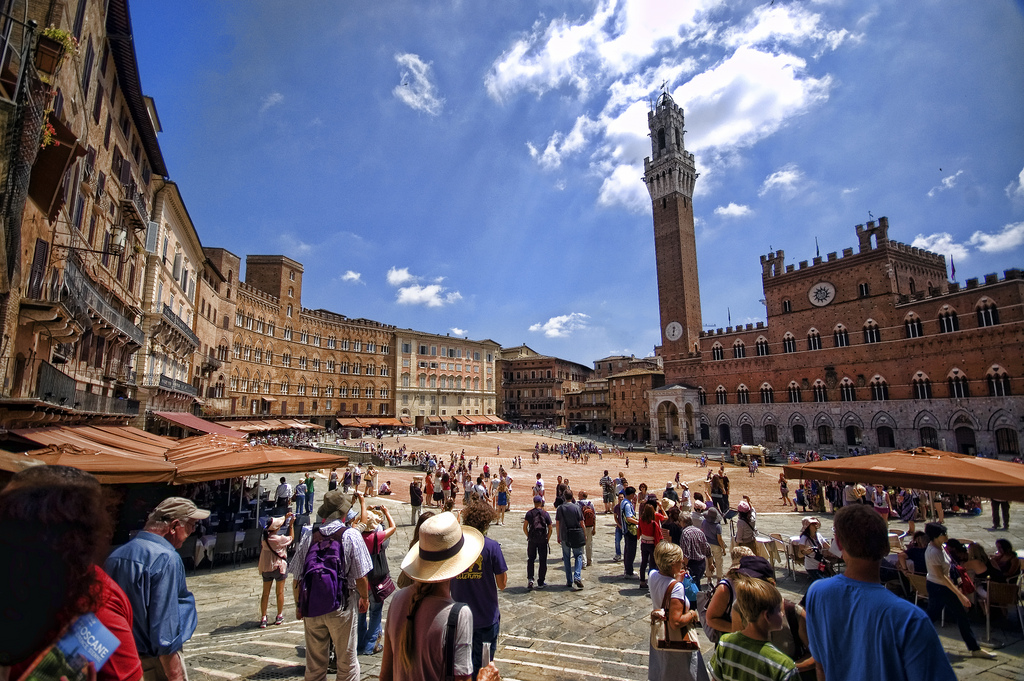




 5 November 2014
5 November 2014
 Caterina Pomini
Caterina Pomini
 12954
12954
From an historic point of view – although previous events indicate that the site was first settled at the time of the Etruscans - the city was founded by Emperor Augustus in the 1st century BC and named Sena Julia. There are no significant documents from the Dark Ages; however, we know that Siena flourished under the Lombard kings and soon gained extreme importance due to its position along the Via Francigena. Around the 12th century, the city's power grew along its rivalry with nearby Florence and this led to a series of wars between Guelph Florence (which was sympathetic to the papacy) and Ghibelline Siena (which was sympathetic to the Holy Roman Empire). The Battle of Montaperti (1260) saw the defeat of the Florentine troops; however, Florence got its revenge against Siena at the Battle of Colle Val d'Elsa (1269). Siena turned Guelph and enjoyed great prosperity under the Council of Nine; it was this bourgeois group that directed the construction of so many of the famous buildings in the Sienese-Gothic style that give the city its stunning appearance (e.g. the Cathedral, the Public Palace and the Piazza del Campo). The events that led to the decline of the city (1555) were the collapse of the Bonsignori Bank, the famine and the Black Death. In 1557, King Philip II of Spain ceded Siena to the Grand Duchy of Tuscany, to which the city belonged until the Italian Unification.
Because the city's building activity was largely interrupted in the 16th century, Siena remains essentially a Medieval city, recognizable among thousands. Famous worldwide for its artistic, historic and cultural heritage, it was inscribed on UNESCO's World Heritage List in 1995.
Few people know that the city is still divided into 3 parts: the City, Camollia and San Martino - Piazza del Campo. The City is where Senius and Aschius settled and built the first fortress (here you can visit Siena's imposing Gothic cathedral, the Complesso Museale Santa Maria della Scala, the Botanical Gardens, the Pinacoteca Nazionale and the Fisiocritici Academy Natural History Museum). Camollia is where the Basilica di San Domenico, the Sanctuary of St. Catherine, the Palazzo Salimbeni, the Palazzo Tolomei and the Fontebranda stand. Finally, in San Martino - Piazza del Campo you can admire the Valley of Porta Giustizia, the Piazza del Mercato, The Basilica di Santa Maria dei Servi, the Pope Lodges and, of course, the striking Piazza del Campo.
Siena also has a rich culinary tradition: you can't visit the city without trying its yummy cold cuts, cheeses, main courses and Christmas sweets. Taste finocchiona (pork salami with fennel), salame chianino, salame di cinta senese, tartufo salami and wild boar sausages; give a try to pappardelle or pici with wild boar or hare sauce, some pecorino cheese (fresh or aged) and finally ricciarelli (almond biscuits), panforte and panpepato... they are just delicious!
Last but not least, if you are visiting the city in early July or mid August, you can attend the Palio (July 2nd and August 16th), the traditional Medieval horse race held around the edges of Piazza del Campo.
THIS SECTION
IS UNDER CONSTRUCTION